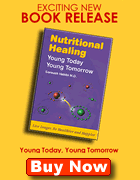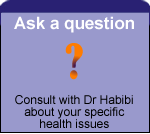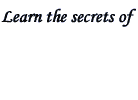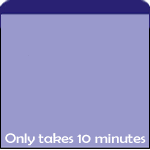 |
Antioxidant Theory
The Health Revolution
Antioxidants are substances that work against the dark side of oxygen. Antioxidants have the potential to render free radicals harmless.
Antioxidants are cell protectors. Antioxidants are friends and free radicals are enemies. Antioxidants are lifesavers. Antioxidants are free radical scavengers. Antioxidants are disease preventers and fighters. Antioxidants like oxygen and water are crucial for the well being of human race. Antioxidants can slow down, prevent or treat degenerative diseases. It is like putting a shield in front of the fireplace to protect your carpet being damaged. How do they do that? As I mentioned earlier, free radicals have one unpaired electron in their outer orbit making them unstable and ever ready to bind to any cell or substance in the vicinity. Antioxidants give up one of their electrons to free radicals to neutralise their damaging effect.
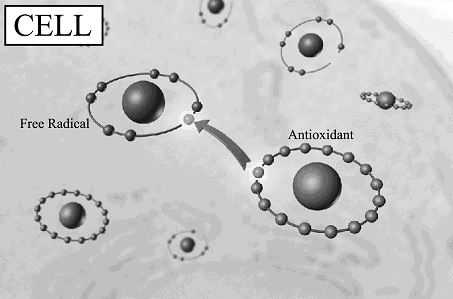
Figure 2: The larger atom on the right is an antioxidant and the smaller atom is a free radical. The larger atom is sacrificing one of its electrons to the free radical atom to neutralise its damaging effect. The background is a human cell.
There seems to be an element of sacrifice in this process. In this way the antioxidant becomes a free radical itself. But another antioxidant will come to the rescue. For example, vitamin C loses one electron to render a free radical harmless and in this manner it turns into a free radical itself. However, as soon as this happens vitamin E will come to the rescue and give one electron to rejuvenate vitamin C in order to continue its antioxidant function. As you can see a chain reaction takes place. That is why it is said that the vitamins work in synergy. That means 1+1 is not 2 but 6, 10 or even 50. As such selenium makes vitamin E 50 times more active as an antioxidant. Vitamin C also regenerates vitamin E. That is why one needs to take the right combination of vitamins, trace elements and antioxidants. These antioxidants need to complement each other in order to continue their vital work. This could be likened to a symphony orchestra in which so many musicians and instruments are participating. Imagine they are playing symphony 9 of Beethoven or Swan Lake of Tschaikowsky. In order to achieve the highest quality performance, not only are the whole members of the orchestra needed but also they should play in harmony. If one member were missing the performance would not be as great. So it is with our health. If the orchestra of proper nutrients were not available to our cells, our health would not be optimal and degenerative disease would ensue.
There have been a huge number of studies on human and antioxidants. In fact, There have been 29670 studies between1966 to April 2001.
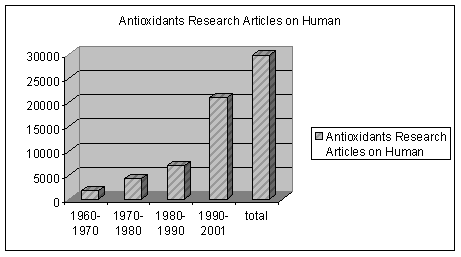
Figure 3: Following chart demonstrates the number of publications from 1966 to April 2001 as extracted from Medline database. |
 |
Vitamin C
Vitamin C was researched in the University of Sydney, Australia. The results was published in the Journal of the American College of Nutrition, 1996; 15; 154-158. In this study young women were given 1000 mg of vitamin C per day. The result was 16% drop in LDL-cholesterol and overall cholesterol ratio reduction. 7
Primary Antioxidants
Our body has its own antioxidant system in place to fight free radical assault. This consists of Superoxide Dismutase (SOD), Glutathione Peroxidase, Caeruloplasmin, Transferrin, Ferritin and Catalase. However, the body cannot produce enough antioxidants on its own to fight the free radical attack. The rest should come from external sources, namely foods. These are called Secondary Antioxidants such as vitamins A, C and E, albumin and bilirubin. The best sources of vitamins are organically grown fresh fruits and vegetables. Alas, we do not seem to get enough of them for various reasons. As outlined previously, our food is highly processed and modified and therefore lacking the right amount of micronutrients needed to prevent free radical damage. Not only are these vitamins, trace elements and antioxidants necessary for assisting the inner antioxidant system, but they also work independently of the natural antioxidant system. For instance, selenium has a role in glutathione peroxidase system, copper in feroxidase and zinc in DNA-dependent RNA polymerase. Superoxide dismutase (SOD) is dependent on copper and zinc. Vitamin B6 is involved in 60 enzymatic reactions; it plays an important role in carbohydrate and lipid metabolism; and it is involved in the synthesis of essential fatty acid (EFA) by products called prostaglandins. As you can see our natural antioxidant defence system needs these vitamins and trace elements to function effectively. Without them it will be crippled.
Professor Linus Pauling 1901(Portland, Oregon, USA) – 1994 (California coast) is one of the great visionaries of the twentieth century. Two of his books are Vitamin C and the Common Cold, Cancer and Vitamin C (with Ewan Cameron, M.D.), and How to Live Longer and Feel Better. He was intrigued by the preventative and curative effects of vitamin C and later on added other vitamins and micronutrients to his recommendations. “The Linus Pauling Institute of Science and Medicine was established primarily to conduct research and education in orthomolecular medicine, following his belief that nutrition could prevent, ameliorate or cure many diseases, slow the aging process, and alleviate suffering”.23
Professor Linus Pauling is the only man in world history who won the unshared Noble Prize twice. The first was in 1954 in chemistry for discovering that sickle cell anaemia was caused by an abnormal gene; and the second was in 1962 for peace.
Professor Linus Pauling was one of the great advocates of mega doses of vitamin C.
Professor Pauling was considered the champion of Vitamin C and its incredible healing effects.
He took his vitamins everyday, worked 10- 12 hours a day and lived 93 years of a challenging and rewarding life.
Secondary antioxidants
The most well known antioxidants are vitamins C, A or its precursor beta-carotene and E. There are numerous other antioxidants discovered such as bioflavonoids, coenzyme Q10, Alpha lipoic acid, N-acetyl L-cysteine, acetyl-l-carnitine, cruciferous, polyphenols (found in extra virgin olive oil), lutein, mixed carotenoids, proanthocyanodins and many more.
Some of antioxidants have a more protective effect specifically on mitochondria such as vitamins C and E, coenzyme Q10, Alpha lipoic and acetyl-l-carnitine. These are critical for the health of our mitochondria, which in turn provide energy for the function of the cell.
As much as antioxidants are crucial for the optimal health of our cells, they are not the whole solution. Good deals of trace elements such as zinc, copper, selenium, magnesium, manganese etc. and cofactors such as folic acid and vitamin B group are necessary for the optimal function of antioxidants. If these were not present in sufficient amounts the antioxidants would not be as effective.
Tertiary antioxidants
These are like Methionine Sulphoxide Reductase and DNA repair enzymes, which deal with repairing cell structures damaged by free radicals.
What are the best sources of antioxidants?
Is there any scientific evidence?
How do they work?
For more detailed information and specific recommendations, please [click here] to become a member of DrHabibi.com
|
 |


